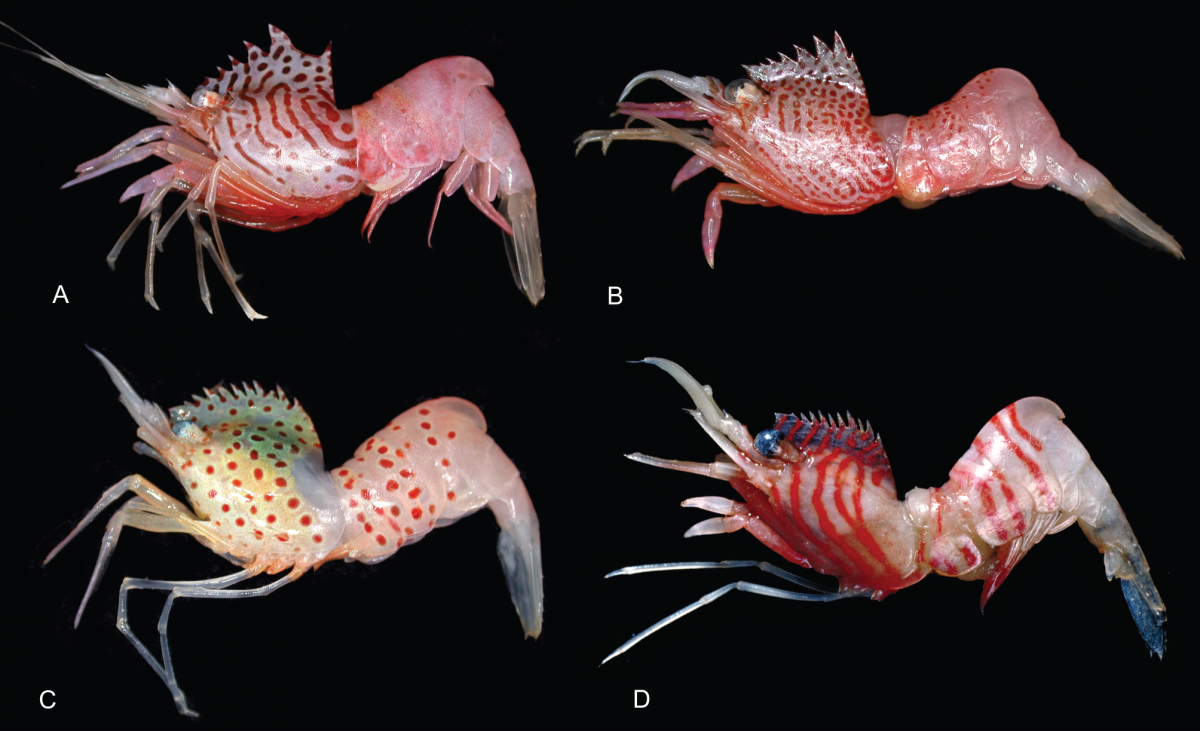December 13, 2013
Lebbeus cristigalli is a small, striped shrimp found across Australia’s north-west marine bioregion - the Commonwealth waters that stretch from Shark Bay in Western Australia to the Northern Territory border. Within this broad range, it occupies a band of dark, cool waters along the continental slope, 390 to 450 metres deep.
L. cristigalli is one of 890 decapod species collected during surveys in 2005 and 2007 from the Marine National Facility Research Vessel Southern Surveyor. The surveys found 263 probable new decapod species (many yet to be described), and another 142 species were recorded for the first time in Australia.
The biogeography of these species is of interest to NERP Marine Biodiversity Hub scientists studying patterns of marine life in WA’s deep waters and the factors that influence them.
The patterns could help shape an updated version of the Integrated Marine and Coastal Regionalisation of Australia (IMCRA4), the classification of bioregions at a scale useful for regional planning, including identification of marine protected areas.
IMCRA4 was released on June 2006 with the note that an update would not be considered before 2010. “Substantial new data on biodiversity or ecosystem processes either in a region or nationally” was identified as one of the reasons for considering an update.
Given that IMCRA4 was based primarily on fish distributions, an important question is how well it represents the distribution of additional taxa – decapods and brittle stars – for which Marine Hub scientists are developing national and global biogeographies. Is it time to review the classification and develop IMCRA5?
Burrowing into bathomes
As well as describing the fauna of these previously unsurveyed areas, the field research off WA began to identify environmental factors that contribute to observed species distributions.
Anna McCallum of Museum Victoria says that decapod species in this study occupied broad latitudinal ranges but narrow depth ranges, such as the habitat of L. cristigalli.
‘Distributions were predominantly correlated with temperature, oxygen and salinity, which are largely related to oceanographic features such as the Leeuwin current that dominate distinct depth bathomes,’ Anna said. ‘This emphasises the importance of incorporating relatively fine scale depth bathomes in marine planning.’
The factors that determine distributions at this broad biogeographic level are often as much evolutionary as related to the current environment.
‘As the deep sea can be environmentally homogenous over large spatial scales, species have the potential to be very wide ranging, and yet their distributions are often confined in space,’ she said. ‘This may be because their ranges have an historical, as well as a current, environmental component.’
‘The stripey shrimp from north-western Australia is closely related to two other species, all of which have a unique mohawk crest. The spotted Lebbeus clarehannah (C) is endemic to the south-west region and Lebbeus yaldwyni (D) is endemic to the south-east marine region. This is an example of how bioregions represent the evolutionary history of the Australian fauna.’
The new knowledge will assist in evaluating the uniqueness of fauna in each of Australia’s newly declared Commonwealth Marine Reserves and help to identify areas of high endemicity or species richness to guide future decision-making for marine biodiversity conservation, both in and outside marine reserves.
Further reading
- A.W. McCallum; G.C.B. Poore; A. Williams; F. Althaus; T. O'Hara. Environmental predictors of decapod species richness and turnover along an extensive Australian continental margin (13–35° S) (2013) Marine Ecology
Images
Like many other decapods, these deep water shrimps are only found within a narrow band of depth on the continental margin, with a different species occurring in each Australian bioregion.
A, B. Lebbeus cristigalli from the north-west (408-431 m)
C. Lebbeus clarehannah from the south-west (397-458 m)
D. Lebbeus yaldwyni from the south-east (190-470 m)
Image credits: A-C by K. Gowlett-Holmes (CSIRO), D by G. Millen (Australian Museum).

Contact
Anna McCallum, Museum Victoria
- Log in to post comments
